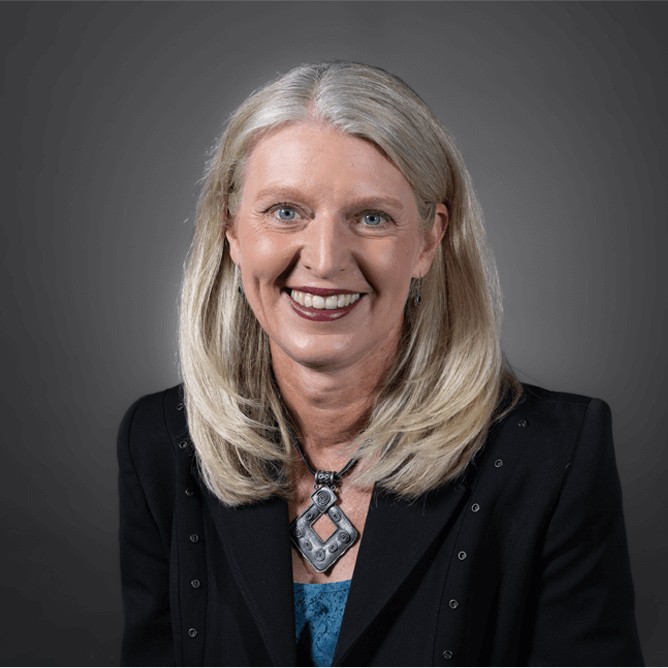Ensuring that each customer journey is seamless is a mighty task. Taking into account your business's needs, the customer's needs and the needs of stakeholders, Chief Customer Officers have to be proficient and formidable, capable of effecting transformative change to turn ordinary experiences into extraordinary ones.
Holding such a responsible leadership role involves continuous improvement, empathy, effective communication, and an eye for data-driven insights. To learn more about what it really takes to be a Chief Customer Officer, we've talked with Carie Buchanan, Customer Success leader, and a former Chief Customer Officer at Pluralsight.
Foundation for greatness
A career trajectory to a Chief Customer Officer can be a peculiar one. Many people enter the workforce with a completely different vision for their end goal once they realize that they are headed toward a different path. With over 30 years of experience in various customer experience roles, Carie cultivated a profound understanding of the industry.
However, while reminiscing about her career beginnings, she says that customer experience was completely off her radar.
"I started my career over 30 years ago, and at that moment in time, I never had a thought of making it to the C-Suite or even thought about the customer experience. I was a finance major trying to get a job in a recession and happened to see two young professionals waiting for a train as I headed to my internship at a big bank in downtown Chicago with the Andersen Consulting (now Accenture) logo on their backpacks.

"At the time, I thought they looked cool (work backpacks were just becoming a thing at the time) and wondered if I could work there. When they came recruiting on campus at Miami University in Ohio, I jumped at the chance to interview with them. Shortly after, I was a new employee there."
After struggling to reach the required level of proficiency in programming, Carie ended up in user testing where she was working directly with the customer. And the rest is history. She continues:
"We were building a call center application for one of the large telephone companies in Chicago and I spent my days with the customer subject matter experts, seeing everything from their point of view and getting to know what they needed to be successful. It was there I developed my true love for the customer and the importance of the customer experience, and have never looked back since!"

Empathy as the ultimate priority
The core mission of a Chief Customer Officer revolves around consistently delivering and elevating a positive customer experience. To be able to know customer preferences, you need to listen. And to be able to understand them, you need empathy. Usually, the two are inseparable and necessary for creating great experiences. When asked about the core skills of a Chief Customer Officer, Carie says:
"For me, empathy is the number one skill. I know this is cliché, but you really need to be able to put yourself in your customer’s shoes and see things from their perspective. This seems easy enough to do, but the trickier skill is to then be able to balance that with your own company’s objectives. There needs to be a balance and you need to be able to push back on both sides when appropriate.
"To truly understand your customers, you must be able to put in the effort and investment, and sometimes it may feel like embarking on an epic quest or climbing Mount Everest especially when budgets are tight. And it’s not just about glancing at some basic demographic data; it's about diving deep into the persona of customers and uncovering what they truly need. "
Undoubtedly, this can be a challenge. CX leaders need to try various techniques to unlock what it is that customers really want and need. Coupling this with data analytics that can help predict trends and behavior, leaders are on the right track. Carie adds:
"Successful CX leaders in this customer-centric battle are those that build a company-wide listening strategy. This means bringing together all the tactics mentioned earlier, like pieces of a puzzle, to form a comprehensive picture of the customer that starts at the top where company leaders prioritize, measure, and champion customer-centric values throughout the organization.
"By fostering a culture that values customer satisfaction and understanding, companies can ensure that everyone, from executives to frontline employees, is aligned in their efforts to meet customer needs. What did I do to develop empathy? I listened…a lot."
Carie remembers one interaction with a dissatisfied customer that left a lasting impression, which ultimately served as a reminder of the absolute importance of customer experience and why it needs to be a company-wide matter. She said:
"This customer had faced numerous challenges with our company, which had a significant impact on their own business. The company I worked for prided itself on being people-centric. Don't get me wrong, it was truly an amazing organization to be a part of, consistently recognized as one of the best places to work. However, during that conversation, the customer's words hit me like a thunderbolt. They said, "You know, we are people too!" That powerful moment served as a reminder of the absolute importance for every facet of the business to be driven by the customer experience, not solely limited to those directly involved in customer interactions."
Transforming trials into triumphs
Business challenges serve as valuable lessons, illuminating the path to growth. They inspire adaptability, innovation, and resilience, fostering a deeper understanding of market dynamics and customer needs. Embracing these challenges nurtures expertise and fortifies organizations for future success. For Carie, beauty lies in the unknown.
"One of the things I love best about being a Chief Customer Officer is that each day brings something completely different. But this is also one of the biggest challenges. I start my day with a plan on what needs to be accomplished that day, and rarely does the day ends with me accomplishing what I set out to do. There is always some unplanned activity or ask, or customer escalation that pops up that requires attention. It feels like fighting little fires everywhere. This requires extreme flexibility and the ability to prioritize those items that must get done and possibly a high-quality fire hose."
Disruptions are not a rare occurrence, but after the worst has finally passed, learning from mistakes is priceless. To illustrate this, Carie described a situation in which a security breach put customer data at risk:
"We used a vendor that had a security breach. While our systems were safe and not impacted, we did have customer data sitting in the vendors files system. To make a very, very, very long and painful story short, this data was eventually exposed on the dark web. The biggest impact was the perception from our customers on the safety of our systems. There were so many different points to consider and people to weigh in on the best approach. How should we look at it from a legal perspective? How should we look at it from a customer perspective? What do we message internally to our sales and success teams? Who should let the customer know what is going on? How much are we obligated to share and required to do versus how much we want to share and do? We made some good decisions and some bad decisions.
"The key to something like this is to have a solid communications plan in place and the right processes to address this. We really needed to have a process in place for dealing with this level of issue and spend more time doing what-if analysis with a clear owner to manage the entire process. This was my greatest lesson learned."
Empower your employees
At the end of the day, people are still the greatest asset, and retaining high-quality employees gets harder every day, Carie says. If employees' needs are neglected, customers soon notice it in the quality of interactions. Fostering a positive and healthy company culture is key for an engaged workforce.
"An organization can only be successful if you empower your employees, provide them with the necessary tools and training, and foster a culture that encourages ownership and accountability for delivering exceptional customer experiences. When employees are engaged and passionate about their work, they become advocates for the customer and serve as valuable ambassadors for the brand.
"I think our role as leaders is to help our teams be successful. Leaders who can build strong teams who are both personally and professionally satisfied will not only lead to higher quality work but will help to retain those employees to help the company grow and be more successful. As a leader, I focus on transparency, integrity, honesty, and accountability. People leave managers, not companies."









